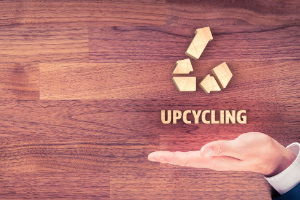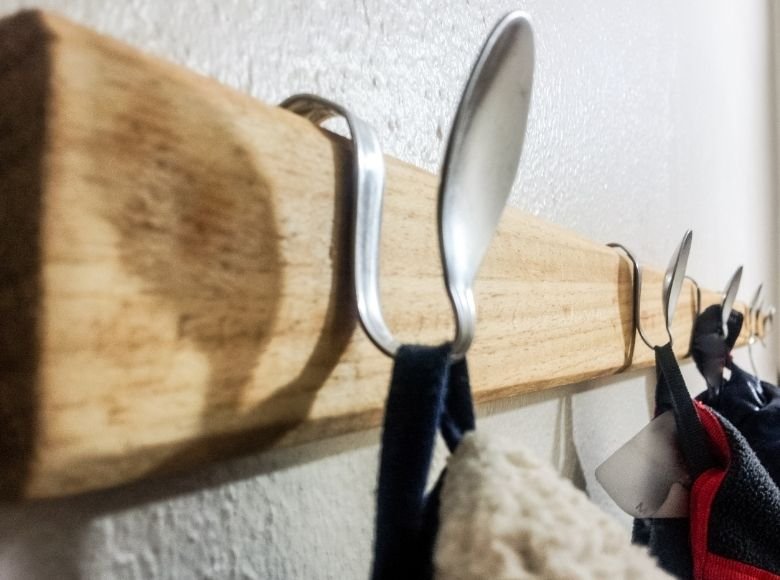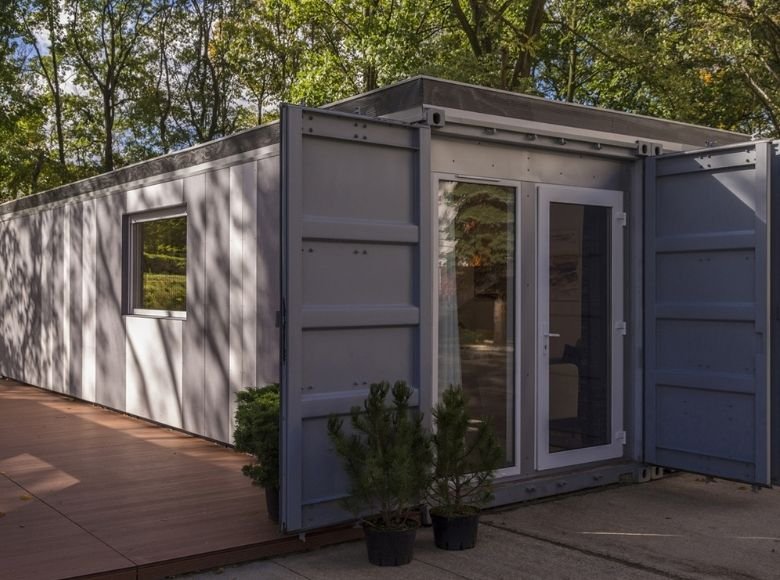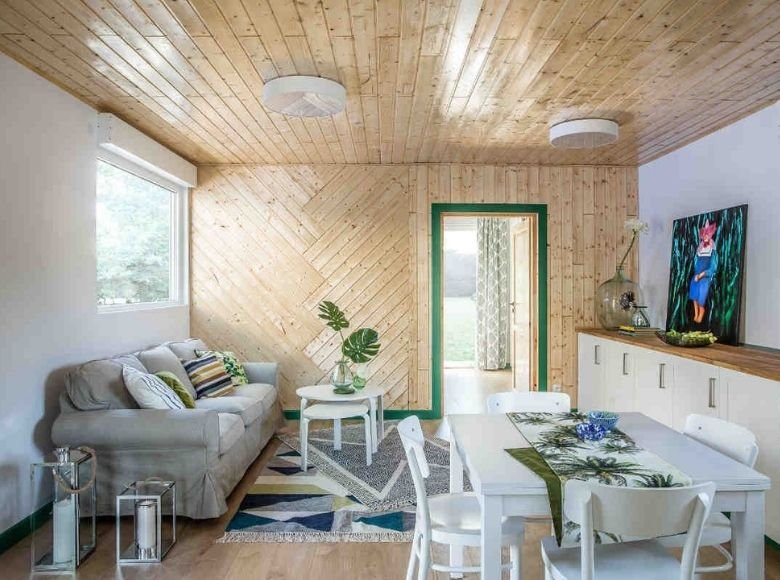Being "eco" is not just a temporary trend. Organic products are found in almost every industry today – from food, through furniture, to clothes and cosmetics. The increasing awareness of consumers leads to choosing products that were made with respect for the environment. The importance of global changes is also understood by brands that maximise the share of organic production. All this leads to a reduction in the amount of waste which, through reprocessing, receives a second life. Upcycling is worth mentioning here. What is it, where is it used, and what are the benefits for the environment and consumers?

What is upcycling?
While probably all of us have came across the concept of recycling, and its definition is no mystery, upcycling is a concept that is still little known by the average consumer. Often referred to as a higher form of recycling, it involves the processing of secondary raw materials in such a way that the result of this process is the creation of things with a value higher than the value of the original materials. Upcycling is the opposite of downcycling, i.e. the processing of secondary raw materials into less valuable products, e.g. waste paper into toilet paper. Thanks to this, the used waste becomes more valuable and can enter the “higher circuit”. Elegant furniture made of pallets, bags from old materials, and even houses from sea containers are only some examples of using upcycling in the modern world.

Second life of waste
The processing of used raw materials and products into completely new, more valuable objects makes it possible to reduce the increasing amount of waste being created on a daily basis. However, upcycling is also an excellent way to give old, worn-out items a “second life”. We are increasingly looking for opportunities to keep items that are valuable to us. The change of their functionality and the processing of them into something completely different makes it possible to preserve their usefulness, while preventing the increase in the amount of generated waste.
3 decades of upcycling in the world
Although very few people in Poland know what upcycling is and how it can be used, elsewhere in the world the trend has been known for nearly 30 years. The German architect Reiner Pilz, who presented the concept of upcycling in a 1994 press interview, is considered to be the creator of the concept. The book “Cradle to Cradle: Remaking the Way We Make Things” published in 2002, where Wiliam McDonough and Michael Braungart explain how to change production systems so that they become more environmentally friendly, also contributed to the popularisation of the trend. It is from this publication that a famous quote comes, saying that:
“Recycling is right, and upcycling is fashionable and right”.
Manifesto of being “eco”
It is worth mentioning that upcycling is not only a specific method of producing vital commodities. It is also an important voice in the discussion on responsibility towards the planet and the environment. Global climate change has an impact on our lives, and one of the biggest problems of the modern world is the rapidly growing amount of waste. Polluted oceans, cities, forests, contaminated soil, water and air are just some examples of the destructive activities of industry and people. The importance of upcycling as a kind of ecological manifesto is even greater, as valuable things from waste can be produced not only by companies but also by each of us, in our own homes.
A perfect example of the fact that upcycling can catch on in society is in the United States, where the philosophy of conscious consumption and maximum waste management is very popular. Let it suffice to say that the number of products marked as “upcycled” in US stores has increased 10-fold over the last 5 years. Such a high demand for organic goods on the one hand means that brands understand the importance of reprocessing, on the other hand – that customers want to buy products made from secondary raw materials.

More than pallet furniture
An example of upcycling that comes to mind almost automatically is the aforementioned furniture from Euro-pallets. This extremely fashionable recent trend shows how valuable things can be created from traditional, publicly available materials. But it does not stop here. Almost every day brands offer us new, creative and functional solutions, such as:
- garments made from 100% recycled materials,
- footwear produced from waste materials,
- used plastic or waste paper lamps and decorative items,
- jewellery from wood, paper or even concrete,
- electronics constructed using secondary raw materials,
- ecological packaging, bags, furniture, dishes.
It is worth mentioning here that upcycling at home can be great fun, which allows you to use and develop the creative skills of household members.
Can upcycling be cost-effective?
As it turns out, upcycling does not only allow us to reduce the amount of waste and favours giving a “second life” to items at home. At the same time, it is a great business idea, taking into account the growing interest of consumers in products from secondary raw materials. Many customers given a choice of similar quality products – one of which was created using recycled materials – will choose the one whose production is more environmentally friendly.
Trends in the production of goods from waste materials and secondary raw materials are determined by global clothing and footwear companies, automotive companies, companies offering furniture and home furnishing. For years, the catering industry has also promoted the trend for ecological solutions. Moreover, more and more cosmetic, pharmaceutical or food companies have increased the pressure on upcycling, offering their clients cosmetics, supplements and packaging produced from processed, used materials.
There are also many domestic companies, too, for which upcycling has become a hallmark and the foundation of a business philosophy. Examples worth mentioning include the following entities from the fashion industry, e.g.: Paradecka Hand Remade or Maldoror Low Couture.
Upcycling and recycling in Poland
Whether upcycling takes place in a particular country depends to a large extent on how a given nation approaches the segregation and processing of waste. Statistics show that the average Pole generates about 4,000 kg of waste per year – the EU average is just less than 4,500 kg per person. Unfortunately, in our country there is still only a small percentage of waste being processed – in 2010 this was slightly more than 40%. This means that we have a lot to do in the “traditional” recycling field. This does not mean, however, that Poles do not want to segregate rubbish. The regulations in force in our country, as in the whole of the European Union, even require such action. The problem is that many of us still have doubts about which container to put specific waste into. As a result of this, instead of going to the right place, it reaches a litter bin, together with other mixed products.
As recent studies show, such an “assurance” segregation is the result of lack of knowledge, precise information and markings. Many people are unsure whether, for example, plastic packaging is actually segregated and prefer not to place it in the plastic container, in fear of contamination of other waste collected there. Interestingly, the European Commission’s data show that although we have already achieved a satisfactory level of recycling of plastics and paper, we still, as a country, depart from the EU’s leading edge with regard to the processing of metal or glass.
Creativity above all!
The great advantage of upcycling is that it can be carried out anywhere, often without the use of specialised equipment. What matters most is creativity. Usually, a little imagination is enough to use home waste, old appliances, scrap-metal or no longer worn clothing to create something completely new, with a potential exceeding the original value of the material.

How to upcycle at home?
Barely a hint of manual skills is often enough – after all, not everyone is an artist or a talented craftsman. Also, the lack of a specialist education is not an obstacle to creating alone, or jointly with other household members, some creative, useful and beautiful products for the home or garden. After all, every invention that changed the history of mankind began with a good idea!
Thinking about how to use upcycling in our everyday lives, it is worth looking around the attic, the garage, the basement and other rooms at home or in the near vicinity. We can find items that can gain a second life or will serve us to create something completely new everywhere. Self-made furniture is not only an excellent way to a cheap and ecological change in interior design but also a chance for excellent fun and finding hidden talents and predispositions.
What can be created from domestic waste?
Life in harmony with nature may become a habit that allows you to limit to the minimum the amount of waste you throw away. Of course, home upcycling solutions need not always be large-sized items with specialist applications. Small domestic accessories, like decorations or clothing items, can also have a high value and be an important part of our everyday lives. By using domestic waste, we can create, among other things:
- an elegant coffee table or a TV stand from wooden pallets,
- a chest or bookshelves for books from old boxes,
- a standing or desk lamp of copper or aluminium tubes,
- a bedcover made from scraps of fabrics,
- linings for cushions from old clothes,
- impressive stained glass from broken glass bottles,
- flowerbeds, caskets, boxes for small accessories from used packaging.

Container houses – large-scale upcycling
When we think about what upcycling is, most of us will think of the aforementioned clothing, furniture and other furnishings around the apartment. However, we can go further and… build whole houses in this way. It is precisely how comfortable, modern and extremely effective residential buildings based on sea containers have been created for years. Upcycling of this type of construction makes it possible to solve the problem of the deficit of inexpensive, comfortable housing in a quick and comprehensive way.
Such a modern solution, i.e. upcycled container houses, is popular in many countries around the world. In recent years, thanks to the dynamic development of MagaHomes, this technology is becoming increasingly popular in Poland. Container houses are quickly made and offer a standard similar to those built using traditional technology.
How are container houses made?
The decommissioned sea container will gain a “second life” and, according to the rules of upcycling, after reprocessing, it presents a higher value. Obtaining the desired residential or usable area is possible thanks to the combination of individual elements. Both the roofs and walls of such a house receive appropriate thermal insulation, which makes container houses energy-efficient and provide optimal thermal conditions for their users throughout the year.
Installations: electrical, sanitary, water and heating systems in buildings from containers are carried out in a similar way to brick houses. Once they have been connected, only the interior finish remains and the whole thing is habitable.
What else should you know about container houses?
Houses made from decommissioned sea containers are certainly a noteworthy alternative to those who want to start living on their own quickly and cheaply. The great advantage of this type of building is their mobility and the fact that, if necessary, the facility can be disassembled and reassembled in a new location. The upcycled container houses available in the offer of PCC Rokita SA, manufactured under the brand MagaHomes, are constructions for which no foundations need to be prepared, which considerably simplifies the construction process. While construction using traditional methods lasts for a minimum of several months, the container house is ready to move into after several weeks.

Summary
Pro-ecological attitudes and behaviours do not need to be limited solely to waste segregation, consciously made purchases and taking care not to litter the environment. Each of us can go further and process raw materials on our own, without the use of specialist technology and expensive equipment.
As you can see, upcycling does not have to be applied only to small items such as accessories, dishes, decorations or furniture. The processing of raw materials in order to give them a higher value and a completely new application can be successfully used in the construction industry, thus solving the problem of the permanent deficit of apartments and premises on the market. It is no wonder that container houses are becoming more and more popular around the world. The approach to upcycling itself is also relevant – the growing awareness of consumers makes it one of those trends which are becoming increasingly dominant in our everyday lives.
- https://dictionary.cambridge.org/dictionary/english/upcycle
- https://www.national-geographic.pl/artykul/upcycling-pomysly-na-nowe-zycie-dla-starych-przedmiotow
